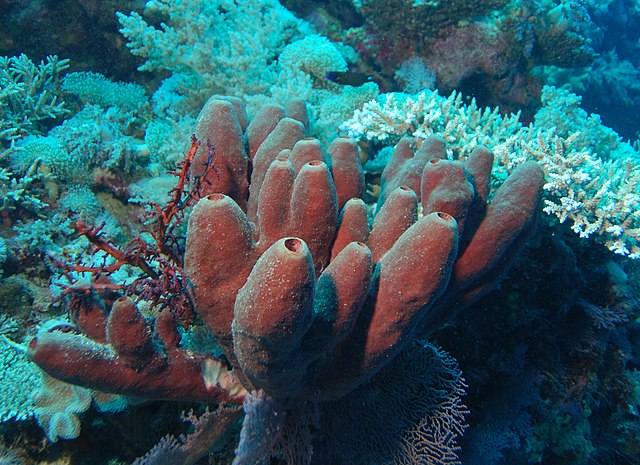Reactions: skeletons of marine sponges suggest that global temperature has already exceeded the 1.5°C limit
Global average surface temperatures may have already surpassed the 1.5°C warming mark and could exceed 2°C by the end of the decade, as suggested by an article published in Nature Climate Change. The projections are based on 300 years of preserved ocean temperature records found in Caribbean sponge skeletons.

Yadvinder Malhi - esponjas
Yadvinder Malhi
Professor of Ecosystem Science at the Environmental Change Institute, University of Oxford.
The way these findings have been communicated is flawed, and has the potential to add unnecessary confusion to public debate on climate change. Despite the headline, the results of this paper do not show that we have already exceeded the Paris climate targets.
“This paper presents a detailed sclerosponge record from the Caribbean that shows that ocean surface warming (something they term industrial-era warming) in this region began in the 1860s, a time earlier than the existence of good ocean temperature records. This finding is used to argue that the pre-industrial reference baseline should be pushed back to the period from the 1700s to 1860, rather than the 1850-1900 period usually used by the IPCC and others. With this new baseline, an extra 0.5C is added to our estimates of industrial-era warming, and hence the studies infers we are already well past 1.5C of industrial era warming and approaching 2.0C.
“While the Paris climate targets set reference warming targets against pre-industrial baselines, there is an implicit assumption this is dominated by human-caused warming caused by the industrial era. It is unlikely that warming of 0.5C in the 1800s is human-caused. By 1900 cumulative human fossil fuel/cement carbon emissions since 1750 were a mere 2.5 % of our cumulative emissions by 2021 (Source: Our World in Data). If we include land use change (much more uncertain) another few percent might be added. This is unlikely to have caused substantial warming compared to the 1.4C of warming caused by the remaining 97.5% of cumulative emissions.
“Hence this early industrial era warming, if real, is almost certainly not human-caused, is not industrial-caused warming. Our models of climate warming impacts are based on warming relative to 1850-1900, and moving the baseline definition of preindustrial does not make these expected impacts worse. Human-caused climate warming to date is still around 1.4C. It is the date of the reference period that matters rather than whether it is labelled pre-industrial or not. The period 1850-1900 is a period of relatively reliable global data when industrial era human-caused climate change was likely negligible.
Kate Hendry - Esponjas
Kate Hendry
Polar Oceans Team, British Antarctic Survey.
If we are to meet climate targets, we obviously must agree internationally on what these targets are to be. To do this, we need a robust and agreed definition of pre-industrial baseline that all temperature anomalies are to be measured against. This paper attempts to do just this by providing a high-resolution temperature record from sponge skeletons collected in a region that could be argued to reflect global change. These archives reveal that the current warming trend may have started earlier, and may have already reached 2°C above pre-industrial levels – a potentially significant benchmark given UN climate targets.
“However, we must keep in mind some considerable complexities surrounding the use of sponge skeleton chemistry as archives of past ocean change. We need to know far more about how these animals make their skeletons, and exactly how their chemistry relates to ambient temperatures – something we don’t have a good handle on now. We need a better understanding of these proxies before we can use them to make important statements about the state of the climate with confidence.
“This study calibrates their temperature archive by comparing sponge chemistry to sea surface temperature (SST) records from the latter part of the twentieth century, and they find a much greater temperature sensitivity than previous studies. Whilst this sensitivity is potentially very useful when building SST anomaly archives, we really need to delve into this more to understand it better. The calibration here only spans a portion of the temperature anomalies since pre-industrial times – it’s very important to know how the chemical proxy ‘works’ across a larger range. Experiments with sponges grown under controlled temperature conditions could be very useful in this respect, if challenging given their slow growth rates, as well as more field studies.
“There’s clearly more we need to know about these sponge archives, and we need more high-resolution climate records from more locations to build a robust, global picture. However, the importance of this paper is that it makes us ask the question: what if the planet has already warmed more than we thought?
Daniela Schmidt - esponjas
Daniela Schmidt
Professor of Earth Sciences, University of Bristol.
Reconstructing baselines for past climates is fundamentally important so that we understand the uniqueness of our current climate crisis. Skeletons and shells of fossils are an important archive for these changes, and form the basis of this analysis.
“Such studies are challenging, due to small sample numbers, regional settings, and the strong biological modification of the climate signal by organisms which result in uncertainties in proxy, in this study temperature reconstructions. The claim that we might have overshot 1.5C is being made rather confidently, when in fact there are several uncertainties and limitations in this study which must be acknowledged.
“Such time series will provide a target for our climate models and challenge us to face the realities of climate change altering our world.
“The absolute degree of warming will always depend on the baseline and different groups have different definitions. The absolute number should not be the focus of the discussion, though. While the Paris Agreement strongly focused on 1.5C, we know that impacts increase with every increment of warming. Missing a target should not say we lose all hope but what we need to increase our efforts. Again, if we miss these target will depend on definitions. One year above 1.5C will allow people and Nature to bounce back. The duration and geographic extend of the overshoot is challenging us as a society to implement the mitigation options we already have and reduce the risks via adaptation.
McCulloch et al.
- Research article
- Peer reviewed



